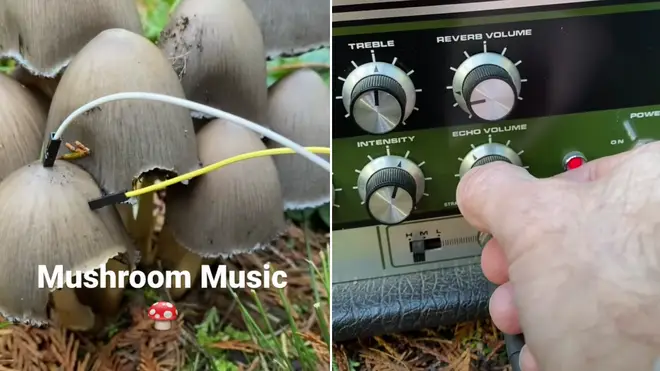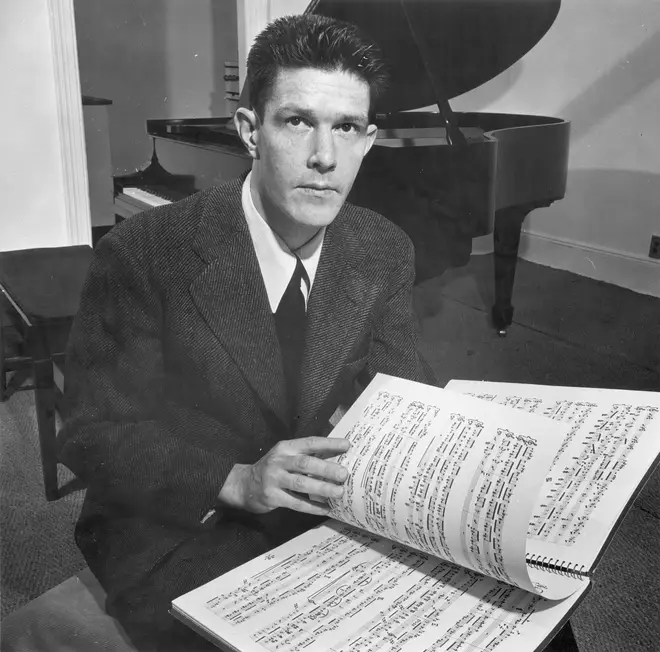On Air Now
The Classic FM Hall of Fame with Margherita Taylor 3pm - 6pm
5 January 2022, 17:32 | Updated: 31 October 2022, 20:08

Meet the musicians making music out of mushrooms using bioelectricity and the Earth’s natural resonance.
Musical artist Mycolyco introduces himself on his Bandcamp page with the sentence, “I grow gourmet mushrooms and connect them to synthesizers.”
You’d be forgiven for stopping in your tracks at the unusual artist biography, but we urge you to dive deeper.
Mycolyco, real name Noah Kalos, is a mycologist (a biologist specialising in the science of fungi) based in North Carolina.
The artist describes his music as “a creative collaboration between humans, mushrooms, and machines”, which in its most basic sense, is exactly that. To be able to ‘play’ his gourmet mushrooms, Mycolyco uses a “biodata sonification module”, and connects the fungi to a synthesiser.
So let’s hear what this sounds like...
Read more: About thyme! This is the world’s first green ‘piano’ made from living plants.

Five Minutes of Pink Oyster Mushroom Playing Modular Synthesizer #mushroom #mushroommusic #mycology
From the followers and view count Mycolyco has racked up across his YouTube, Instagram, and TikTok, it is clear that there is an audience for this new genre of music.
And he’s not the only artist to join the mycology music trend.
Tarun Nayar from Vancouver, grew up learning Indian classical music, which heavily inspired his own discovery of mushroom music.
“I learned that Indian classical music is heavily influenced by vibrations,” he told Vice in a recent interview. He notes his training in the genre helps him make sense of what, “the plants are trying to say”.
Nayar continues, “I use various techniques to harness the bioelectricity of the plants and Earth’s natural resonance that is beyond the audible spectrum of the human ear.”
“The plants are not creating any music themselves. I use the movement of water inside these plants as electrical resistance. So when I plug circuit cables to them, even small changes in the said resistance due to the plant’s natural bioelectric charge manifest as notes of music.”
Read more: Meet the veg patch orchestra bringing chamber music back to its natural roots
American composer, John Cage, was not only one of the most influential composers of the 20th century, but he was also a great mushroom lover.
Cage was an enthusiastic amateur mycologist, and even co-founded the New York Mycological Society.
On a trip to Italy to visit his friend and fellow composer, Luciano Berio, Cage appeared on the Italian quiz show Lascia o raddoppia. His specialist subject? You guessed it, mushrooms. And his expertise in the area won him the jackpot of 5 million lire (historical equivalent of £3,000).
Cage actually had a very close call because of his favourite fungi, when one foraging trip landed him in hospital. He had accidentally ingested poisonous hellebore, which he had mistaken for a skunk cabbage. Had the composer not been treated within 15 minutes of his hospital admission, he would have died.
Read more: A 639-year-long John Cage organ piece had a very rare chord change. And it was quite an event.

Despite this, mushrooms continued to influence Cage, and which led to Cage’s 1972 Mushroom Book and his 1983 poem ‘Mushrooms et Variationes’.
Gary Lincoff, a former president of the North American Mycological Society, said that “Cage believed he could hear the mushrooms in the woods, but I think [he said it] with tongue in cheek.”
Tongue in cheek or not, Cage’s fungal friends now have the technology to express themselves musically, and we’re interested to see what other living materials will be the next to make music using bioelectricity.